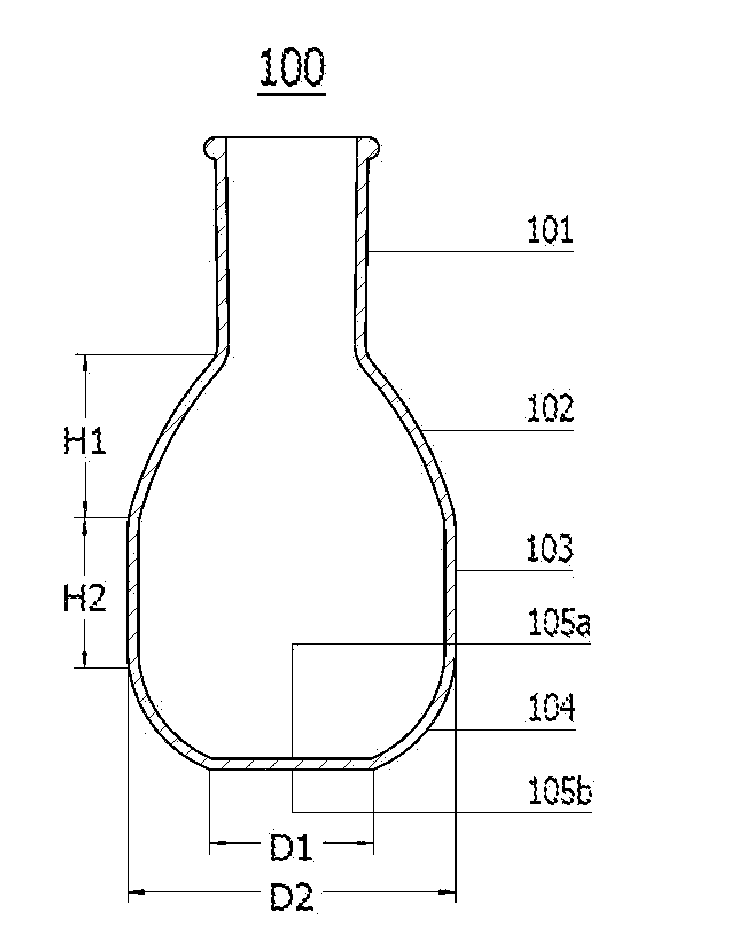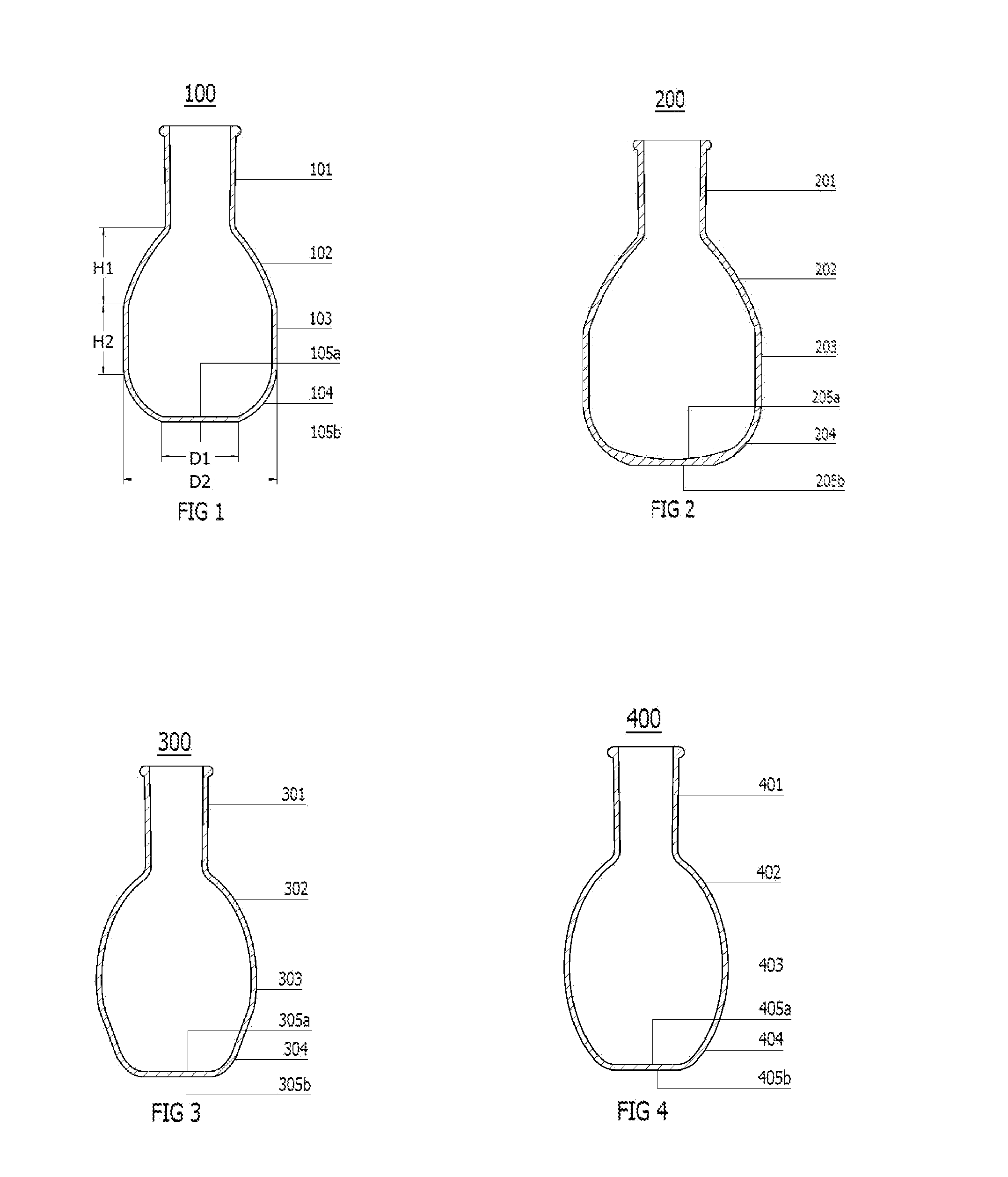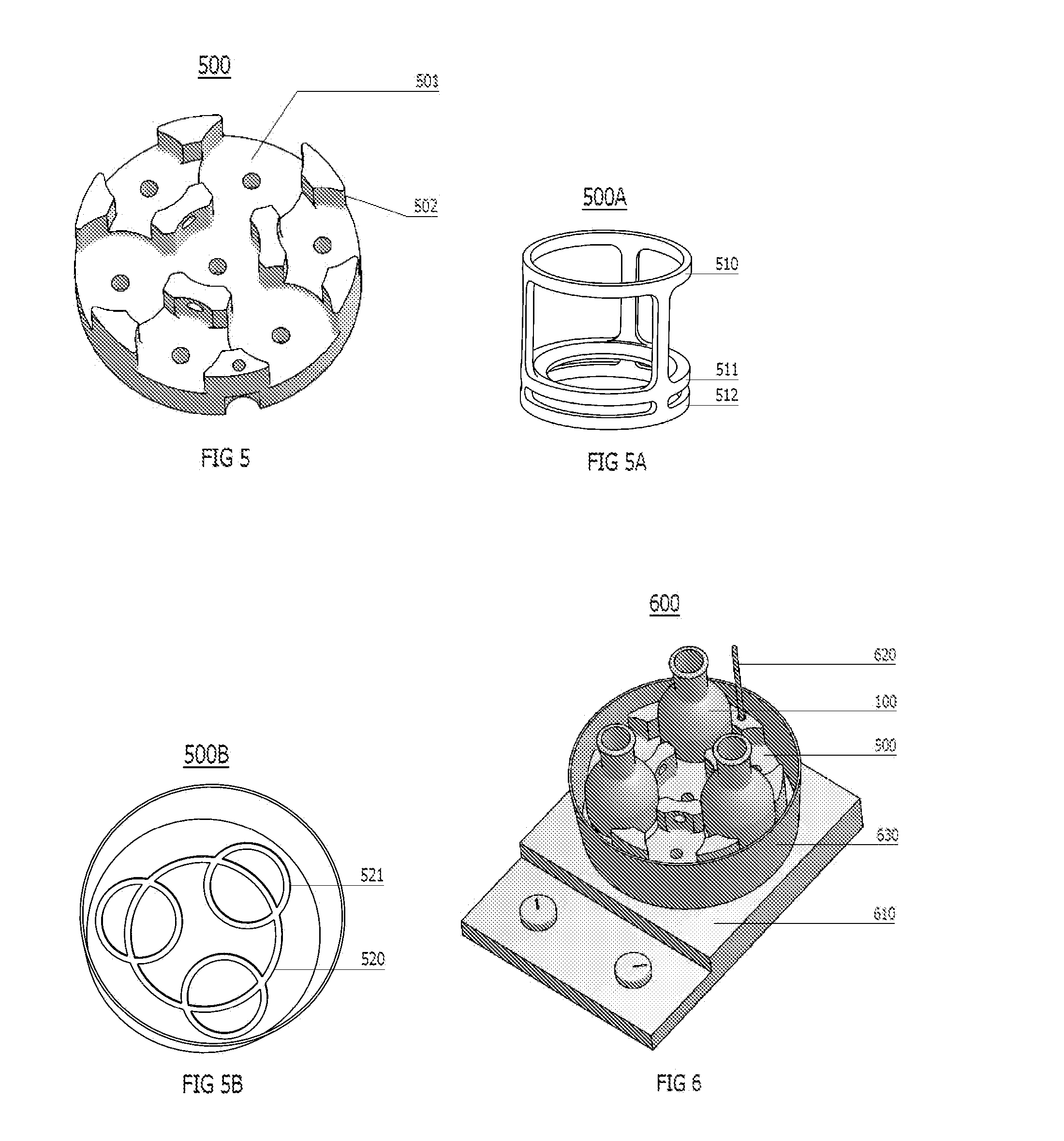Laboratory flasks and flask kits
a technology of laboratory glassware and flasks, applied in the field of laboratory glassware, can solve the problems of inability to use multi-flask reactions and solvent distillations, storage bottles may burst, and burst under vacuum, and achieve the effect of preventing slithering on the bench
- Summary
- Abstract
- Description
- Claims
- Application Information
AI Technical Summary
Benefits of technology
Problems solved by technology
Method used
Image
Examples
Embodiment Construction
[0021]In the first embodiment shown in FIG. 1, the innovative glass flask 100 has a single-necked standard tapered outer joint 101, a upper portion 102 adjacent to the joint, a barrel-shaped middle portion 103 adjacent to the upper portion, a curved lower portion104 adjacent to the middle portion, an inside flat bottom 105a and an outside flat bottom 105b. The standard tapered outer joint 101 is in sizes of 14 / 20, 19 / 22, 24 / 25, 24 / 40, 29 / 26, 29 / 42, 34 / 45, 45 / 50, or 55 / 50, which fit the most commonly used laboratory glassware with the standard tapered inner joints. While the length of the joint is listed, it will be appreciated that the length of the tapered region can vary and does not need to match the tapered joint exactly. As is conventionally known, a size of 14 / 20, for example, means that the standard tapered outer joint 101 is fourteen millimeters in diameter and twenty millimeters in length. The upper portion 102 is slightly curved (e.g., a larger radius of curvature than oth...
PUM
 Login to View More
Login to View More Abstract
Description
Claims
Application Information
 Login to View More
Login to View More - R&D
- Intellectual Property
- Life Sciences
- Materials
- Tech Scout
- Unparalleled Data Quality
- Higher Quality Content
- 60% Fewer Hallucinations
Browse by: Latest US Patents, China's latest patents, Technical Efficacy Thesaurus, Application Domain, Technology Topic, Popular Technical Reports.
© 2025 PatSnap. All rights reserved.Legal|Privacy policy|Modern Slavery Act Transparency Statement|Sitemap|About US| Contact US: help@patsnap.com



